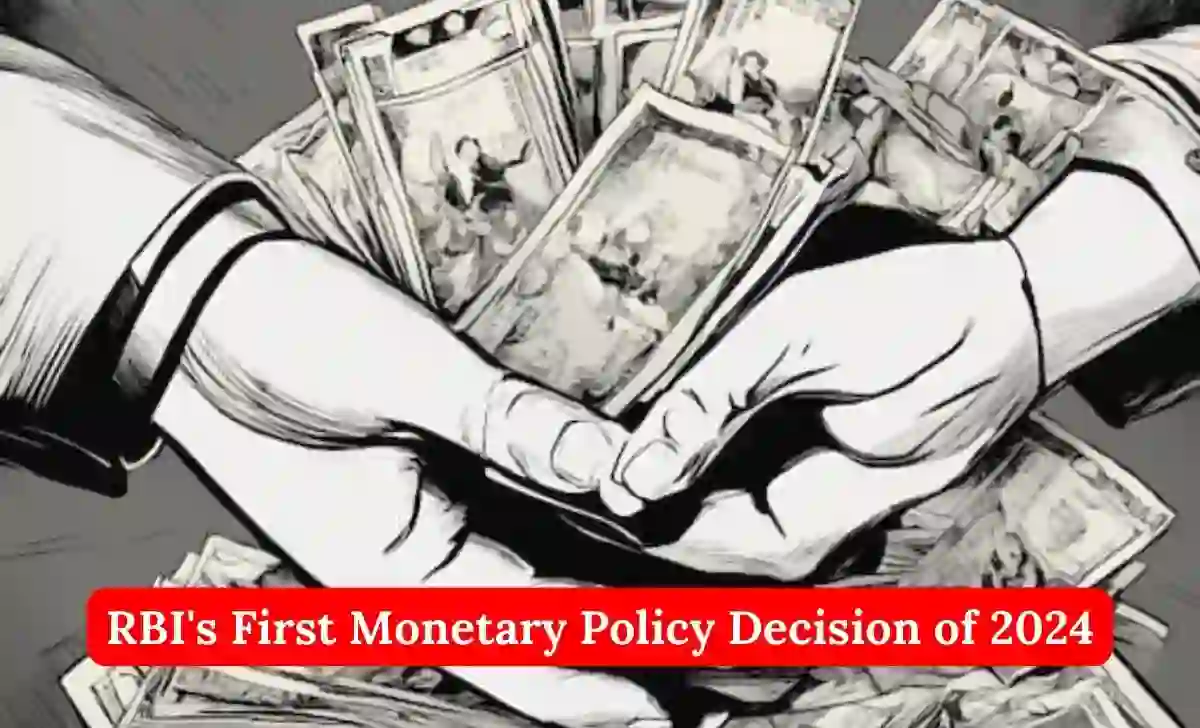RBI’s Monetary Policy on 8 February 2024: NSE Share Bazaar Stumbles
On 8 February 2024, the Nifty index once again commenced with a gap up, opening at 22,009.65, surpassing the previous day’s close of 21,930.50. However, the index failed to sustain its initial gains, reflecting the trend observed over the past several days. The Reserve Bank of India (RBI) revealed its inaugural Monetary Policy for 2024 on this eventful day. Despite the optimistic beginning, the decline of the NSE Nifty commenced right from the opening bell.
RBI’s Impact on Market Sentiment:
The trading session coincided with the RBI Governor’s address on the Monetary Policy. Interestingly, as the RBI Governor concluded his address, Nifty experienced a rapid decline, plummeting to a low of 21,665.30 during the trading session. The central bank’s remarks seemed to have influenced market sentiment, leading to heightened volatility.
Intraday Recovery and Closing Figures:
Despite a partial recovery, the index concluded the day at 21,717.95, marking a loss of 0.97%. The intraday movements underscored the market’s sensitivity to macroeconomic announcements and policy updates, emphasizing the need for investors to stay informed and agile.
BankNifty’s Response to Policy Shifts:
Simultaneously, the NIFTY Bank index also initiated the day with a gap up, commencing at 45,973.85 compared to the previous day’s closure at 45,818.50. However, the picture changed dramatically during the RBI Governor’s speech, as the index surged to a high of 46,181.20. The RBI’s emphasis on transparency in loan disclosure norms for banks prompted discernible cracks within the BankNifty. Nifty Bank made a low of 44,893.75 before closing at 45,012.00.
Foreign vs. Domestic Investor Cash Activity on 8 February 2024:
The trading activity of Foreign Institutional Investors (FII) and Domestic Institutional Investors (DII) on 8 February 2024 witnessed significant movements. FIIs offloaded shares worth 4,933.78 crores in the cash segment, while DIIs purchased equity worth 5,512.32 crores. The long-to-short ratio in FII index futures stood at 0.49, indicating a prevailing bearish sentiment among these investors.
Also Read:
- 9 February 2024: NSE Share Market Update
- NSE Share Bazaar Update on 7 February 2024
- NSE Share Bazaar Flourishes on 6 February 2024
FII Derivative Statistics for 8 February 2024:
You can refer to the image below for the FII derivative statistics for 8 February 2024.
Top Performers and Laggards:
In the Nifty index, top gainers included SBIN, BPCL, and POWERGRID, while KOTAKBANK, BRITANNIA, and AXISBANK emerged as the top losers. Similarly, within the BANKNIFTY index, SBIN, BANKBARODA, and PNB secured gains, whereas KOTAKBANK, AUBANK, and AXISBANK faced notable losses.
Option Chain Insights for NIFTY: 8 February 2024
The Option Chain data for NIFTY expiring on 15 February 2024 highlighted significant changes in Open Interest Calls and Puts. Investors closely monitored the shifts in these options contracts, which provided insights into the market’s sentiment and potential price movements.
Option Chain Insights for BANKNIFTY:
Meanwhile, in the BANKNIFTY index expiring on 14 February 2024, substantial shifts in Open Interest Calls and Puts were evident. Investors paid close attention to these changes to gauge market expectations and adjust their trading strategies accordingly.
Conclusion:
In conclusion, the trading session of 8 February 2024 reflected the market’s response to the RBI’s Monetary Policy announcement, with Nifty and BankNifty witnessing volatile movements. Additionally, the FII and DII trading activities, along with the Option Chain data, provided further insights into the market dynamics on this eventful day. Investors remained vigilant amid evolving economic policies and global market trends, navigating through the fluctuations with strategic decisions.
RBI’s Monetary Policy on 8 February 2024: NSE Share Bazaar Stumbles Read More »









